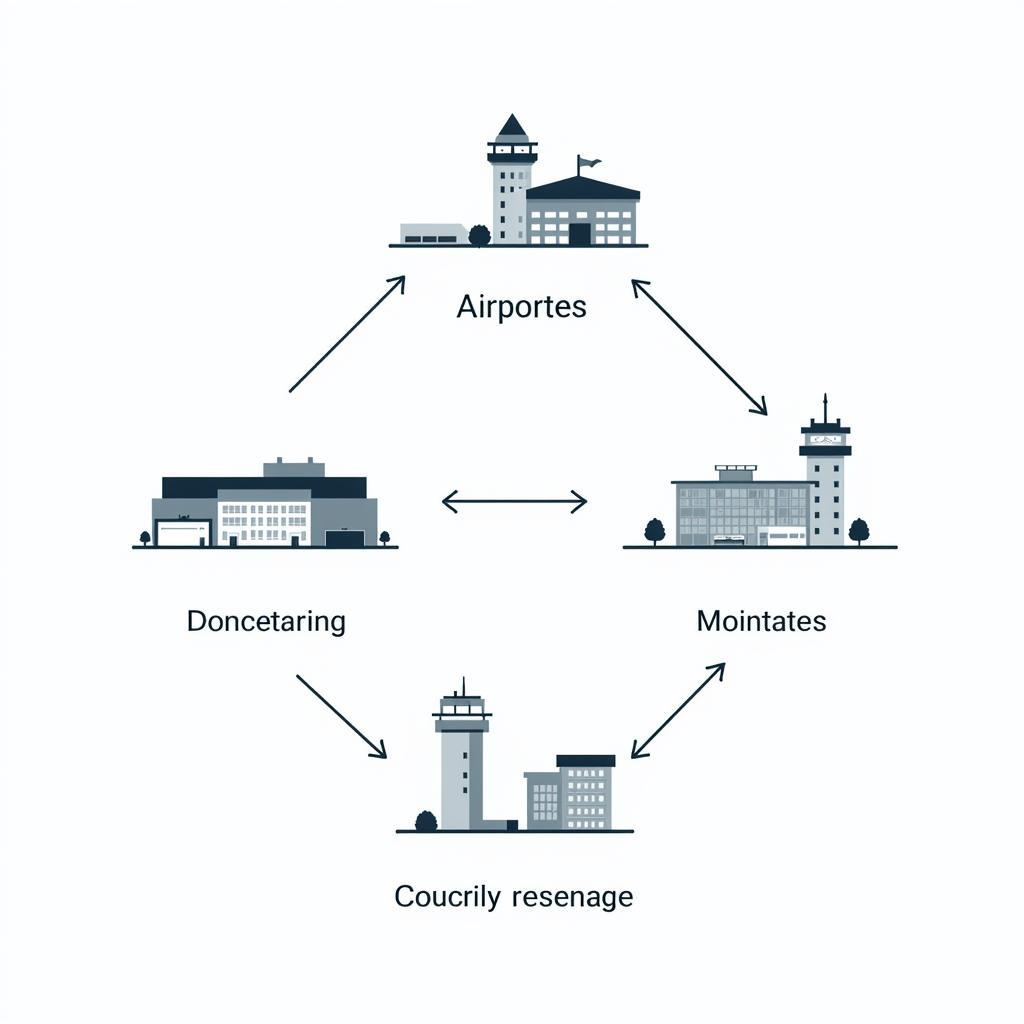Having 4 international airports in one state might seem excessive, but for certain regions, it’s a necessity. This phenomenon often reflects a state’s economic power, tourism appeal, and geographical size. We’ll explore the factors contributing to this unique situation and delve into the intricacies of managing multiple international gateways.
Factors Driving the Need for Multiple International Airports
Several key elements contribute to a state requiring multiple international airports. A booming economy often necessitates increased air traffic for both business and leisure travel. Similarly, a strong tourism industry requires convenient access for international visitors. Geographic size and diverse regions within a state also play a crucial role. A single airport may not be sufficient to serve a vast area effectively. Moreover, specialized functions, such as cargo or private aviation, might warrant dedicated airport facilities. For example, someone searching for a “2 bhk flat for lease in bagalur cross airport road” might be interested in the economic activity generated by a nearby international airport.
Economic Impact and Tourism
International airports are economic engines, generating jobs and boosting local businesses. They facilitate trade and investment, connecting a state to the global market. Tourism, often fueled by these airports, contributes significantly to the state’s revenue and cultural exchange.
Geographical Considerations and Specialized Functions
The sheer size of some states makes multiple international airports a logistical necessity. California, for example, has a diverse geography, ranging from coastal cities to mountainous regions. Serving these dispersed populations with just one airport would be impractical. Furthermore, some airports specialize in specific functions like cargo handling or private aviation, necessitating dedicated facilities.
Managing Multiple International Gateways: Challenges and Opportunities
Operating multiple international airports within a single state presents unique challenges. Coordination and resource allocation become complex, requiring efficient infrastructure management and streamlined security protocols. Competition between airports can also arise, demanding strategic planning to ensure balanced growth and development. However, this situation also presents immense opportunities. It can create a synergistic effect, fostering economic growth across various regions within the state.
Coordination and Resource Allocation
Maintaining seamless operations across multiple international airports demands careful planning and resource allocation. Efficient baggage handling systems, streamlined customs procedures, and robust security measures are crucial for ensuring smooth passenger flow and safety.
Competition and Collaboration
While competition between airports can drive improvement and innovation, collaboration is equally important. Sharing best practices, coordinating flight schedules, and jointly promoting the state as a travel destination can benefit all stakeholders. You can find information about other airports, like “Teterboro Airport“, to compare different management strategies.
 Strategies for Managing Multiple International Airports
Strategies for Managing Multiple International Airports
Case Study: California’s Four International Airports
California exemplifies the need and the successful management of multiple international airports. Its four international airports – Los Angeles (LAX), San Francisco (SFO), San Diego (SAN), and Sacramento (SMF) – cater to diverse regions and needs. LAX, as the busiest, handles a massive volume of international traffic, while SFO focuses on connecting to Asia-Pacific destinations. SAN serves the southern part of the state, and SMF acts as a central hub for inland regions.
Balancing Regional Needs and International Connectivity
California’s airport network effectively balances the diverse needs of its regions while maintaining strong international connectivity. This balanced approach has been instrumental in driving economic growth and fostering tourism throughout the state. Those looking for “airport near me now” in California benefit from this extensive network.
Conclusion
4 international airports in one state are not just a statistic; it’s a testament to a region’s economic dynamism and strategic vision. While managing multiple gateways presents challenges, it also unlocks significant opportunities for growth and development. By effectively balancing regional needs with international connectivity, states can leverage these airports to propel their economies and enhance their global standing. California’s success story serves as a model for other regions considering expanding their international airport infrastructure. Knowing the “Trivandrum International Airport contact number” can be useful when comparing international airport services.
FAQ
- Why would a state need four international airports?
- What are the challenges of managing multiple international airports?
- How does California manage its four international airports?
- What are the economic benefits of having multiple international airports?
- Are there any downsides to having multiple international airports in one state?
- How does having multiple airports affect air travel costs?
- What are some other examples of states with multiple international airports?
For any further assistance, please contact us at Phone: +13089626264, Email: [email protected] or visit us at 404 Bothwell St, Oxford, NE 68967, USA. We have a 24/7 customer service team ready to assist you.